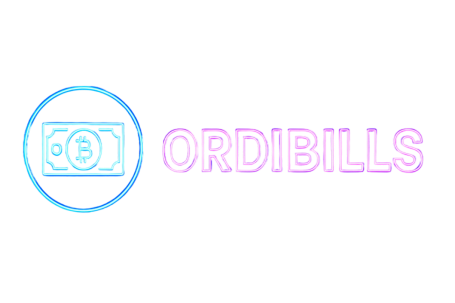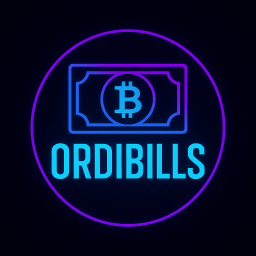
📘 Introduction
NFTs changed the crypto landscape by enabling digital ownership. Ethereum led that charge. But Bitcoin, the original blockchain, is now introducing its own approach through Ordinals. These aren't your typical NFTs — they're simpler, deeply embedded into Bitcoin's structure, and arguably more permanent.
This guide aims to equip you with a comprehensive yet accessible understanding of Ordinals: what sets them apart, how they work, and what to consider before investing.
📖 Chapter 1: The Evolution of NFTs and Bitcoin's Entry
🔹 1.1 What are NFTs, really?
NFTs (Non-Fungible Tokens) are unique digital assets, often representing art, music, or access rights. On Ethereum and other chains, NFTs use smart contracts and metadata stored off-chain or on IPFS.
🔹 1.2 The rise of Ordinals
In 2023, Bitcoin developer Casey Rodarmor introduced Ordinals — a method of inscribing data directly onto individual satoshis (smallest units of Bitcoin). It brought the NFT concept to Bitcoin without relying on smart contracts.
🔹 1.3 Why this matters
Bitcoin was always seen as "digital gold" — slow, secure, and simple. The introduction of Ordinals brings new utility: digital art, proof of ownership, permanent messages, and even decentralized publishing.
📖 Chapter 2: How Ordinals Work
🔹 2.1 The building blocks
Ordinals work by assigning a serial number to each satoshi and enabling data to be inscribed directly onto them using Taproot, an upgrade introduced to Bitcoin in 2021.
🔹 2.2 Inscription vs Tokenization
Unlike Ethereum NFTs that create tokens pointing to data, Ordinals embed data within the transaction. This makes the data immutable and native to Bitcoin.
🔹 2.3 Indexers and wallets
Since Bitcoin doesn't natively track inscriptions, third-party indexers and wallets (like Hiro and Xverse) are essential to view, send, or receive Ordinals.
📖 Chapter 3: Use Cases and Projects
🔹 3.1 Current use cases
🎨 Digital art and collectibles (e.g., Ordinal Punks)
🤡 Meme culture (e.g., Taproot Wizards)
📝 Permanent messaging
🏛️ Historical archiving
🔹 3.2 Experimental applications
📚 Decentralized publishing
🆔 Identity markers
⏱️ Timestamping patents or ideas
🔹 3.3 Notable projects
Ordinal Punks
Bitcoin Rocks
Taproot Wizards
📖 Chapter 4: Investing in Ordinals
🔹 4.1 How to evaluate an Ordinal
Rarity of the satoshi (early block, uncommon type)
Art or message quality
Creator reputation
Community and liquidity
🔹 4.2 Red flags
No marketplace presence
Unverified inscriptions
Overhyped promises
🔹 4.3 Example walkthrough
Let’s analyze Inscription #2049. What is it? Why is it valuable? What should a buyer look for?
📖 Chapter 5: Risks and Technical Challenges
🔹 5.1 Technical risks
❌ Mistakenly burning valuable sats
⚠️ Poorly inscribed content (wrong format, too large)
🔒 Lost due to incompatible wallets
🔹 5.2 Market risks
💸 Illiquidity (hard to sell)
🚨 Hype-driven overvaluation
🏛️ Regulatory unknowns
🔹 5.3 Philosophical pushback
Many Bitcoin maximalists oppose Ordinals, viewing them as spam. This can affect long-term adoption and tooling.
📖 Chapter 6: Tools and Resources
🔹 6.1 Wallets
Hiro Wallet
Xverse Wallet
Unisat
🔹 6.2 Marketplaces
Ordinals Market
Magic Eden (BTC section)
Gamma
🔹 6.3 Explorers and Inscribers
ordinals.com
ord.io
OpenOrdex
📖 Chapter 7: What Comes Next?
Ordinals may just be a trend — or they may revolutionize Bitcoin’s utility layer. Whether they evolve into a serious layer for identity, art, or IP timestamping depends on:
Community support
Developer tooling
Regulatory clarity
📘 Glossary
• 🪙 Satoshi — The smallest unit of Bitcoin (0.00000001 BTC)
• 🔢 Ordinal — A satoshi with an assigned number and (optionally) inscribed data
• 🌿 Taproot — A Bitcoin protocol upgrade enabling complex transactions and inscriptions
• 📝 Inscription — Data embedded on a satoshi using the Ordinals protocol
• 💠 BRC-20 — A token standard inspired by ERC-20 but designed for Bitcoin via Ordinals
✍️ About the Author
Lluís Silvestre Blay is a researcher, writer, and blockchain enthusiast based in Spain. Passionate about decentralized technologies, he focuses on making complex crypto topics accessible to everyone. His book "Ordinals: The Future of Cryptocurrencies" explores the disruptive potential of Bitcoin Ordinals and their role in reshaping the NFT landscape.
📍 More at: X (Twitter) – @totalordinalNFT
© Copyright. All rights reserved
Contact | Privacy Policy
Necesitamos su consentimiento para cargar las traducciones
Utilizamos un servicio de terceros para traducir el contenido del sitio web que puede recopilar datos sobre su actividad. Por favor revise los detalles en la política de privacidad y acepte el servicio para ver las traducciones.

